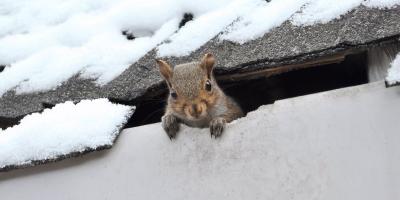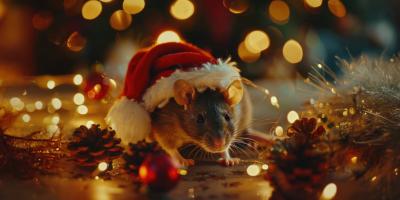4 Spiders That Might Crash Your Halloween Party

There’s just something about spiders that gives people the creeps. Maybe it’s the eight long, dexterous legs, or the multiple beady eyes. Or maybe it’s the way they trap their prey in a web of silvery silk and suck the blood out of them like a vampire.
Well, that last part isn’t actually true, but many people are still under the wrong impression.
Nonetheless, spiders are still considered “scary” by enough people that they are used as Halloween decorations for haunted houses and parties. Below, we’ve listed four different species of New England spiders that might just make a cameo at your Halloween party this year:
Broad-Faced Sac Spider
The broad-faced sac spider will occasionally tour the kitchens of New England homes, and has been known to deliver a nasty bite to humans in rare instances. It typically prefers to spend its time outdoors under window sills, siding, fences, or rocks. The broad-faced sac spider is a hunting spider, and actively seeks its prey rather than spinning a web to lure other insects for food. Although there have been only two confirmed cases of venom injection in humans by the broad-face sac spider, experts suggest that any bites be carefully monitored for signs of infection or tissue damage.
American House Spider
American house spiders aren’t considered dangerous to humans, but they can still deliver an irritating bite. The pain from an American spider bite can be comparable to a bee sting, and some minor swelling or redness can occur. For the most part, however, the American house spider is relatively harmless. This arachnid spins irregular, convoluted webs in the corners of homes and buildings, which might just be perfect for your Halloween decorations. They can be found during any season of the year, and they prefer damp, dark environments.
Crab Spiders
There are more than 130 species of crab spiders in the United States. Many of them can be found among the vegetation and gardens of New England. Crab spiders get their name from their ability to walk sideways as well as backward and forward. Their front legs are much longer than their hind appendages, and they are often brightly patterned with multiple, vibrant colors to camouflage themselves among flowers and fruits.
Wolf Spider
Wolf spiders have hairy black, brown, and grey bodies, which often causes people to misidentify them as tarantulas. Wolf spiders do not spin webs, but create burrows in which they reside. The Carolina wolf spider is the largest of the wolf spider species, reaching up to 35 millimeters in body length. Wolf spiders — especially adult males — are known to occasionally squeeze through gaps under doors or windows.
Even if they’re not on your guest list, spiders can easily crash a party by finding their way inside your home, or hitching a ride on someone’s clothing or luggage.
Do you have too many spiders trick-or-treating on your doorstep? The experienced professionals at JP Pest Services can get rid of spiders inside and outside of your home quickly and completely! Contact JP Pest Services to request a free residential estimate today!



